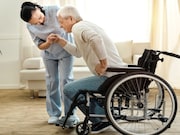Incidence rates vary by sex, diagnostic criteria, and country income level
FRIDAY, Aug. 2, 2019 (HealthDay News) — Community-dwelling older adults are prone to developing frailty, according to a review published online Aug. 2 in JAMA Network Open.
Richard Ofori-Asenso, Ph.D., from Monash University in Melbourne, Australia, and colleagues conducted a systematic literature review to estimate the global incidence of frailty and prefrailty among community-dwelling adults ≥60 years. The authors reviewed 46 observational studies involving 120,805 nonfrail (robust or prefrail) participants from 28 countries.
The researchers found that among nonfrail individuals who survived a median of 3.0 years, 13.6 percent became frail (pooled incidence rate, 43.4 cases per 1,000 person-years). Compared with robust individuals, the incidence of frailty was significantly higher in prefrail individuals (pooled incidence rates, 12.0 and 62.7 cases per 1,000 person-years, respectively). In women, frailty and prefrailty incidence rates were significantly higher than those seen in men (frailty, 44.8 versus 24.3 cases per 1,000 person-years, respectively; prefrailty, 173.2 versus 129.0 cases per 1,000 person-years, respectively). The investigators noted variance in incidence rates by diagnostic criteria and country income level. When adjusting for the risk for death, frailty and prefrailty incidence rates were significantly reduced.
“Increased awareness of the factors that confer high risk of frailty in this population subgroup is vital to inform the design of interventions to prevent frailty and to minimize its consequences,” the authors write.
Copyright © 2019 HealthDay. All rights reserved.








